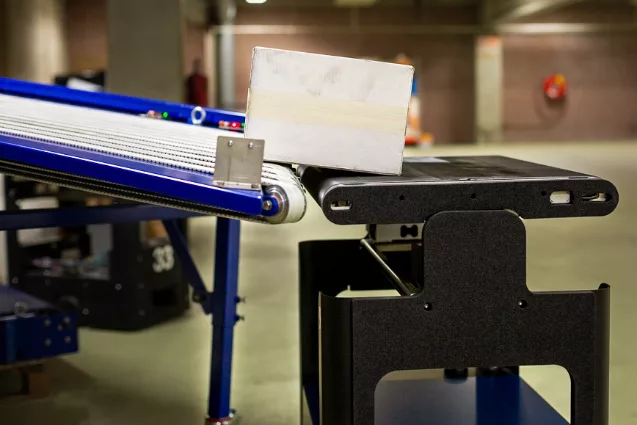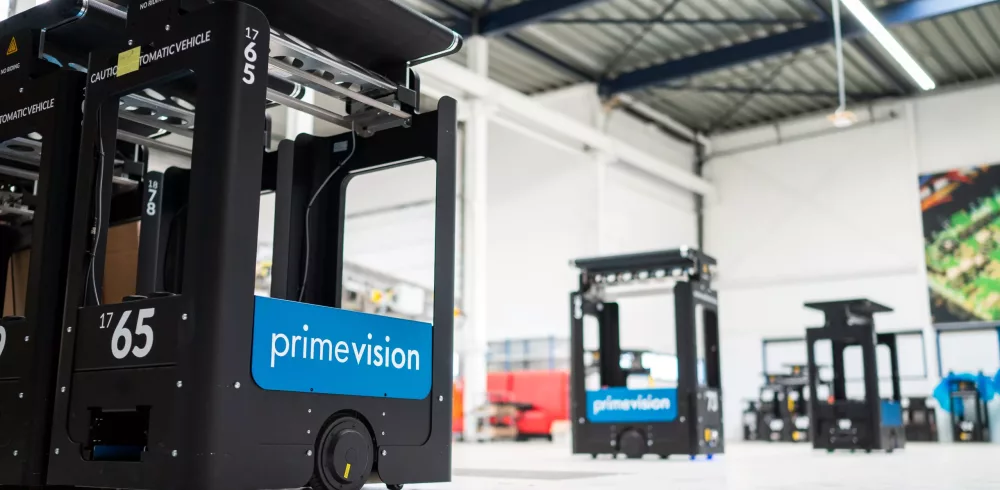Everyone has heard of going the extra mile. Hans Jongebloed, Senior Postal Expert at Prime Vision, explores the possibilities.
For e-commerce, parcel, postal and logistics companies, the last mile is often the most challenging. To streamline how parcels arrive on the doorstep, many businesses are relying on localised or temporary facilities. For smaller sorting centres close to the customer, robots are a proven solution to optimise routes, maximise available capacity and reduce overheads.
All over the world, delivery drivers are travelling vast distances to drop off parcels. Whether in vans or cars, on bikes or tricycles, people follow their satnav or rely on old-fashioned local knowledge to complete this hard, physical job. It’s also an expensive activity for businesses, equating to around 41% of the cost of the entire logistics process.[1] This is because delivery takes up a lot of time, incurs fuel costs and requires plenty of personnel.
The further a driver goes to deliver a parcel, the more expensive it is. Therefore, companies prefer to place pick-up points near popular delivery routes in easy to access areas, so less distance is travelled to the first drop-off. However, there are complications.
Challenges today and in the future
Available land is finite, so the opportunities for businesses to build sorting centres of their dreams close to delivery routes are few and far between. Many must make do with operating from existing facilities with less floorspace.
Next is the uncertainty of demand. Rapid growth has been the narrative of parcel delivery, driven by convenience and supercharged by the unique conditions of the pandemic. However, many businesses are unsure how demand will change in the future. Will there be enough customers in five years to make investment in a new, large local sorting centre worthwhile? Unsure, most companies are delaying big projects to see future market outcomes.
In the meantime, they still need to sort for the demand that is there today. Achieving this often relies on smaller, temporary facilities. Using a small local site, companies can get closer to their customers to improve service and reduce costs, while pop-up sorting centres can be set up to cover the peak periods around November and December.
Fixed infrastructure isn’t optimum
The challenge is to work out the optimum operation based on parcel volume. The 100 to 200 parcel capacity of a van doesn’t change, so more deliveries mean additional drivers are needed, and therefore, more sorting capacity, mandating multiple facilities close to the route. As parcel volumes increase, companies can find themselves feeling the squeeze.
This can be exacerbated by equipment. Most of the fixed infrastructure used in large sorting centres is unsuitable for small scale or temporary facilities. Sortation machines are massive and expensive, costing nearly as much to disassemble and transport as the initial purchase. Likewise, conveyors are fixed to the floor, making them difficult to move. Regardless, the local power grid may not offer the capacity to run larger machinery. Furthermore, even at peak demand, local sorting centres simply don’t experience the volume that the larger sites do, making big machines and conveyor systems uneconomical.
Sorting the last mile with robots
Robots from warehouse automation experts like Prime Vision are the perfect choice for sorting the last mile. Suitable for everything from small sorting centres to operations running out of hired garages, robots won’t get in the way of any approach a business wishes to take.

Robots can process 100 to 10,000 parcels a day, with the fleet able to grow or shrink to meet demand. Completely flexible, they can be programmed or rerouted to accommodate sorting parcels to more or less drivers without any of the restrictions of fixed infrastructure, allowing businesses to maintain streamlined operations. Crucially, robots don’t need as much room as other equipment, making the most of smaller locations.
They are transportable as well, which is ideal for temporary facilities. Fleets of 20 to 50 robots can be operational at a site in a few days, buying companies time to see how local volumes change. This is a better approach than risking investment in large facilities, as robots allow operators to simultaneously gauge and meet demand. If volumes begin to drop, robots can be easily transported elsewhere. Prime Vision specialises in these relocations, often moving equipment for its US customers to new facilities within a week.
Such qualities become especially useful during peak demand in November and December. It also suits the business model of third-party logistics (3PL) companies, which typically have three-to-five-year contracts – not enough for a return on investment (ROI) on sortation machines or conveyors. When a new contract is secured, the 3PL can simply take the robots with them. This ability to accommodate different last mile set-ups and strategies means robots can work at all levels of the logistics food chain. More than that, robots enable businesses to overcome specific challenges and unlock new advancements in last mile logistics.
Driving change in logistics
The shortage of drivers in logistics is well publicised, but what is less talked about is how robots can help alleviate the problem, giving businesses more flexibility in how they respond. If some drivers are missing on a particular day, ad hoc changes to the robot’s software can seamlessly divide the parcels over the remaining team. This allows businesses to maximise the resources they have, ensuring consistency of service and avoiding bottlenecks.
Robots also enable a deeper level of sorting that can open new possibilities in the way that routes are taken. More efficient deliveries can be organised for parcels with a two-day due date or longer, especially if orders destined for the same addresses or local areas can be grouped together. This is beneficial in the countryside as it minimises mileage, while in cities it reduces traffic. Drivers benefit from making less stops and shorter routes. While more prevalent with letters, robots make this possible for parcels too.

The high optimisation of sorting and routes also suits sustainable delivery methods. By sorting parcels in order of drop-off, deliveries by bike are streamlined, helping riders to cover more addresses in less distance. This is equally beneficial for electric vans, allowing drivers to make the most of available vehicle range. Operations can also be tailored to factor in battery charging times, so a van is always ready to go. Over the coming years, the flexibility of robotic sorting at small local facilities will be key in supporting cleaner ways of getting parcels to people.
Getting closer to the right solution
Efficient and cost-effective last mile logistics rely on getting closer to the customer. However, the right conditions to build the perfect localised sorting centre for the activities of an e-commerce, parcel, postal or 3PL organisation rarely exist. When supporting fluctuating demand during a shortage of space and drivers – robots are the way to go.
Prime Vision has experience providing robots for last mile logistics operations worldwide, applying their benefits to support varied approaches to improving the efficiency and cost-effectiveness of last mile delivery. With its expertise and flexible solutions, delivery companies can not only get closer to their customers, but their automation partner too.
Manufacturing & Engineering Magazine | The Home of Manufacturing Industry News















